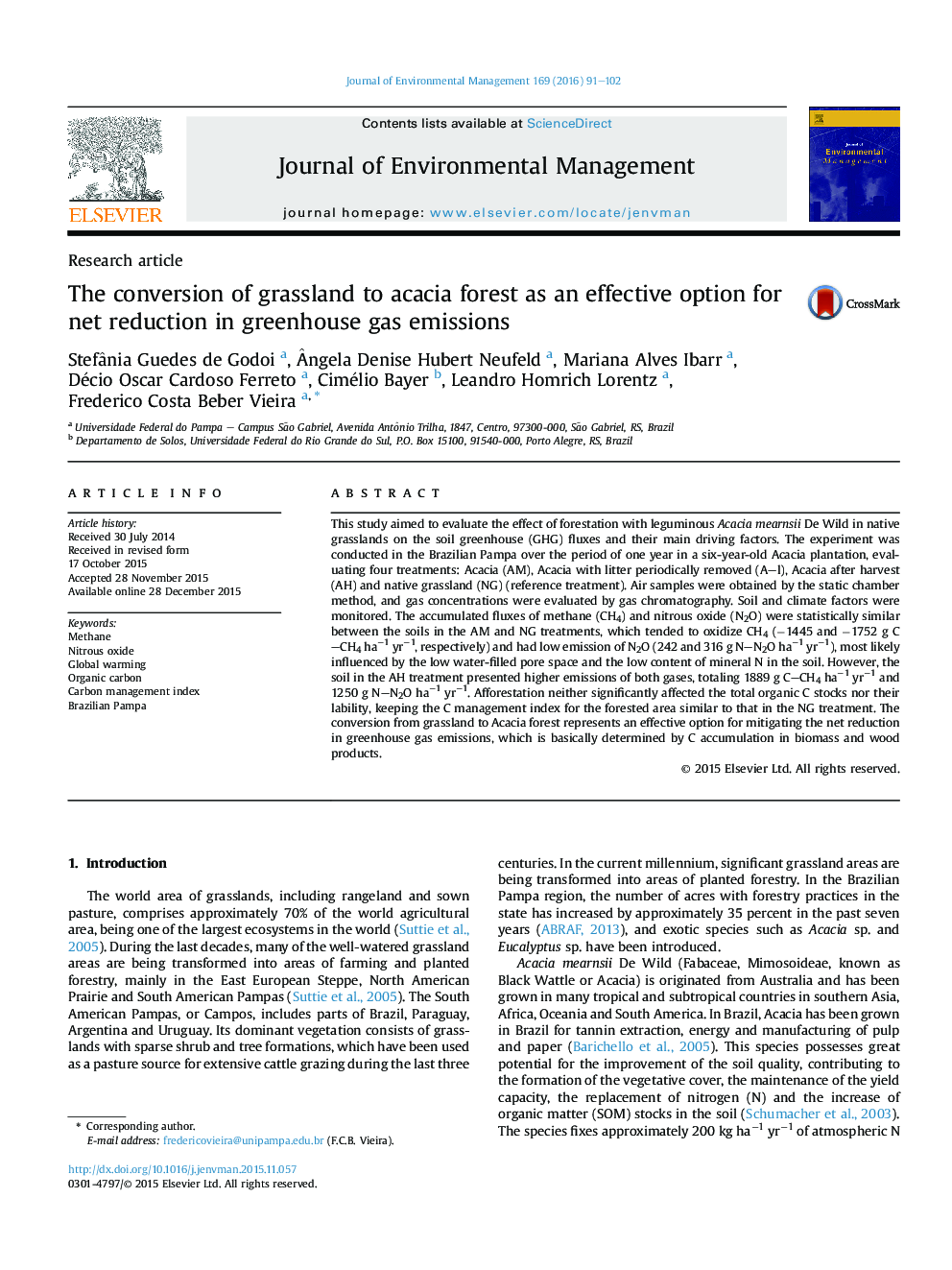| کد مقاله | کد نشریه | سال انتشار | مقاله انگلیسی | نسخه تمام متن |
|---|---|---|---|---|
| 1055440 | 1485243 | 2016 | 12 صفحه PDF | دانلود رایگان |
• Greenhouse gas of grassland soil converted to Acacia forest were evaluated.
• Afforestation did not affect the soil nitrous oxide and methane emission.
• Changes in the net reduction of GHG were driven by the C in the wood products.
• The soil under Acacia recently harvested presented larger emissions of both gases.
• Acacia afforestation in the Pampa has large potential to mitigate GHG emission.
This study aimed to evaluate the effect of forestation with leguminous Acacia mearnsii De Wild in native grasslands on the soil greenhouse (GHG) fluxes and their main driving factors. The experiment was conducted in the Brazilian Pampa over the period of one year in a six-year-old Acacia plantation, evaluating four treatments: Acacia (AM), Acacia with litter periodically removed (A–l), Acacia after harvest (AH) and native grassland (NG) (reference treatment). Air samples were obtained by the static chamber method, and gas concentrations were evaluated by gas chromatography. Soil and climate factors were monitored. The accumulated fluxes of methane (CH4) and nitrous oxide (N2O) were statistically similar between the soils in the AM and NG treatments, which tended to oxidize CH4 (−1445 and −1752 g C–CH4 ha−1 yr−1, respectively) and had low emission of N2O (242 and 316 g N–N2O ha−1 yr−1), most likely influenced by the low water-filled pore space and the low content of mineral N in the soil. However, the soil in the AH treatment presented higher emissions of both gases, totaling 1889 g C–CH4 ha−1 yr−1 and 1250 g N–N2O ha−1 yr−1. Afforestation neither significantly affected the total organic C stocks nor their lability, keeping the C management index for the forested area similar to that in the NG treatment. The conversion from grassland to Acacia forest represents an effective option for mitigating the net reduction in greenhouse gas emissions, which is basically determined by C accumulation in biomass and wood products.
Journal: Journal of Environmental Management - Volume 169, 15 March 2016, Pages 91–102
